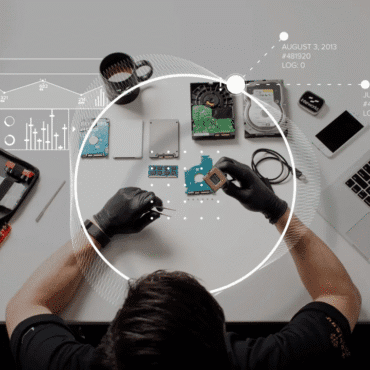Data Recovery from RAID Systems: Challenges and Solutions
RAID (Redundant Array of Independent Disks) systems are widely used in businesses and enterprises to ensure data redundancy, performance, and fault tolerance. From small offices using RAID 1 for mirroring to large data centers relying on RAID 5, RAID 6, or RAID 10 for complex storage solutions, these systems are integral to modern IT infrastructure.
However, like any storage system, RAID arrays are not immune to failure. Disk failures, human errors, malware attacks, or even controller issues can lead to data loss. Recovering data from RAID systems is far more complex than recovering from a single hard drive, requiring specialized knowledge, tools, and techniques.
This blog will explore the challenges of RAID data recovery and the solutions experts use to restore lost data, explained in a clear, step-by-step manner.
What is a RAID System?
A RAID system combines multiple physical hard drives into a single logical unit to achieve:
-
Redundancy – Protects against data loss if a disk fails (e.g., RAID 1, RAID 5, RAID 6).
-
Performance – Distributes read/write operations across disks to improve speed (e.g., RAID 0, RAID 10).
-
Capacity Optimization – Combines storage from multiple drives into a single, large volume.
RAID can be hardware-based, managed by a RAID controller, or software-based, managed by the operating system. Both types have their unique recovery challenges.
Common Causes of RAID Data Loss
Understanding why RAID failures occur is crucial to recovery:
-
Physical Hard Drive Failure
Despite redundancy, multiple drives can fail simultaneously due to age, mechanical wear, or manufacturing defects.
-
RAID Controller Failure
A faulty RAID controller can make all disks appear inaccessible, even if the drives themselves are healthy.
-
Human Error
Mistakenly formatting a RAID volume, deleting partitions, or replacing drives in the wrong order can lead to data loss.
-
File System Corruption
Power failures, system crashes, or malware attacks can corrupt the file system, making data unreadable.
-
Configuration Issues
Incorrect RAID rebuilds, firmware glitches, or mismatched drive configurations can disrupt access to data.
-
Malware and Ransomware
Malicious attacks can encrypt RAID data, requiring careful recovery methods to prevent permanent loss.
Challenges in RAID Data Recovery
Recovering data from a RAID system is not straightforward because:
1. Complex RAID Configurations
Each RAID level stores data differently. For example:
-
RAID 0: Stripes data across drives with no redundancy; failure of one drive leads to total data loss.
-
RAID 5/6: Uses parity to recover data, but recovery requires accurate reconstruction of the parity blocks.
2. Simultaneous Disk Failures
RAID systems tolerate limited drive failures. If multiple drives fail beyond the RAID level’s tolerance, data reconstruction becomes extremely difficult.
3. Controller Dependencies
Hardware RAID arrays rely on proprietary controllers. Simply moving disks to another system may not work due to differences in controller firmware or metadata.
4. Data Overwriting
Accidental rebuilds, reinitialization, or formatting can overwrite data, making recovery more complex.
5. Time Sensitivity
RAID failures are critical events. Delayed action can lead to further damage, like additional disk failures or degradation of partially recovered data.
Solutions for RAID Data Recovery
Despite these challenges, RAID data recovery experts use a combination of methods to restore data:
1. Disk Cloning
Before any recovery attempt, each drive is cloned sector-by-sector. This ensures that the original disks remain untouched, preserving data integrity.
2. RAID Reconstruction
Experts analyze:
Using this information, they virtually reconstruct the RAID in a controlled environment.
3. Parity and Data Recovery
For RAID 5/6, recovery tools calculate parity to restore missing or corrupted data. This step is delicate and requires precise calculations to avoid further corruption.
4. File System Repair
Once the RAID structure is reconstructed, recovery software repairs file system inconsistencies, reconstructs lost directories, and restores files.
5. Handling Controller-Specific RAID
Proprietary RAID controllers often store metadata unique to the manufacturer. Experts may need to emulate the original controller in software to recover data properly.
6. Preventing Further Damage
Professional labs maintain strict protocols, including:
Best Practices to Avoid RAID Data Loss
While recovery is possible, prevention is always better:
-
Regularly back up data to separate storage systems or cloud solutions.
-
Monitor drives using SMART tools for early failure detection.
-
Avoid improper rebuilds or reinitializations after failure.
-
Use UPS (Uninterruptible Power Supply) to prevent power-related damage.
-
Document RAID configuration, including drive order, stripe size, and controller details.
Conclusion
RAID systems are designed to provide redundancy and performance, but they are not infallible. When failure occurs, data recovery becomes a highly technical challenge requiring expertise, precision, and specialized tools.
Professional RAID recovery involves:
-
Cloning disks to prevent further data loss
-
Virtually reconstructing RAID arrays
-
Repairing file systems and retrieving lost files
Understanding the challenges and solutions in RAID data recovery emphasizes the importance of preventive measures, proper configuration, and expert intervention when disasters strike. With the right approach, even complex RAID failures can be successfully navigated, ensuring critical data is preserved and restored.





Repair Manual on October 5, 2025
It’s amazing to pay a quick visit this web page and reading the views of all colleagues concerning this article, while I am also keen of getting familiarity.